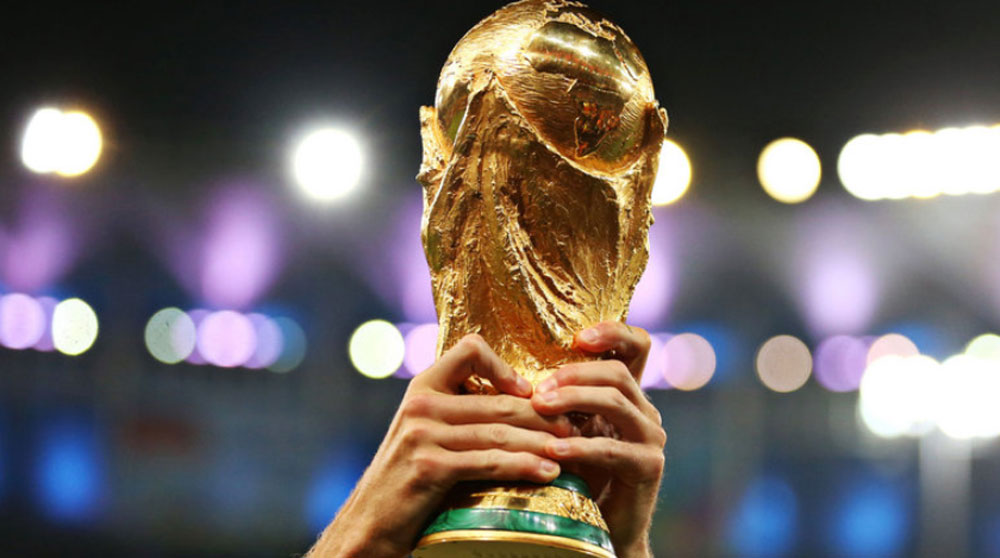The massive news making Singaporeans jealous:
Malaysia’s national broadcaster Radio Televisyen Malaysia (RTM) will be airing a majority of the 2018 Fifa World Cup live for free for the first time on a free-to-air channel.
How much is it costing Malaysia?
It is estimated to cost RM40 million (S$13.5 million) to show the matches live, Minister of Communications and Multimedia Gobind Singh Deo revealed on May 30.
A total of 41 matches would be aired, of which 27 would be shown live.
This is out of the total of 32 teams in eight groups that are competing in 64 games in Russia across four weeks from June 14 to July 15.
How is Malaysia paying for the World Cup 2018 broadcast rights?
There is no such thing as free in this world, so the costs will mostly likely be borne by taxpayers, but shared with commercial sponsors.
“We are of course looking to reduce the cost and there will be plans to bring in sponsors and advertisers," Gobind said at his ministry.
“These, however, are still in the midst of negotiations, but we are looking to finalise the matter as soon as possible as we have less than a few weeks.”
The final cost borne by the state will be lower, Gobind said.
He also said he expects the cost "to be considerably less, because it is done by way of direct negotiation, and in these negotiations, we normally try and reduce it further.”
One way of absorbing costs is to find commercial sponsors.
How much did Singapore pay for the World Cup 2018 broadcast rights?
It was revealed in April 2018 that Singapore paid S$25 million to secure the World Cup broadcast rights this time round, a slight increase from 2014.
This is a joint bid by Singtel, StarHub and Mediacorp -- making it a historic three-way, quasi-public partnership.
The price for all broadcast packages is S$112.35, if bought after May 22.
Unlike Malaysia's generous spread of matches, Mediacorp will be broadcasting only nine free-to-air matches on okto, which is five more than in previous years.
The nine matches are (Singapore time):
Opening match: Russia vs Saudi Arabia (June 14, 11pm)
Group match: Argentina vs Iceland (June 16, 9pm)
Group match: Brazil vs Costa Rica (Jun 22, 8pm)
Group match: England vs Panama (June 24, 8pm)
Group match: Denmark vs France (June 26, 10pm)
Group match: South Korea vs Germany (June 27, 10pm)
Semi-final (July 11, 2am)
Semi-final (July 12, 2am)
Final (July 15, 11pm)
What is the reason for not broadcasting all matches live for free?
It was mentioned previously in 2014 that Singapore cannot broadcast all the matches live for free as the costs of doing so are too prohibitively high.
A lot of taxpayers' money would have to be diverted to the acquiring of the broadcast rights.
As explained in Parliament then by Lawrence Wong, Second Minister for Communications and Information, the price for the broadcast rights to the World Cup is set by Fifa, and prices have been escalating around the world and not just in Singapore.
Moreover, the combined value of the allocated airtime and the Singapore Pools sponsorship deals is still very far from the cost of acquiring the broadcast rights to all the World Cup matches.
What is the Singapore method?
The four free matches -- opening match, semi-finals and finals -- shown on free-to-air television in 2014 was subsidised by the government.
The government provided a partial subsidy to Mediacorp for the acquisition of these four key matches, to ensure their availability on free-to-air television.
In return, Mediacorp allocated advertising airtime to the government to screen some public service messages during the World Cup, such as the ones on the Pioneer Generation Package.
Economies of scale
In terms of economies of scale, Malaysia definitely has it better.
With a population of 31 million people, Malaysia's per capita cost to watch the World Cup is substantially lower than Singapore's.
Advertisers and corporate sponsors also enjoy greater mileage with more viewers.
Singapore's population, even with transient visitors thrown into the mix, comes up to approximately six million people only -- a fraction of Malaysia's audience.
Higher bids for broadcast rights
In 2014, StarHub slammed SingTel's exclusive purchase of rights instead of submitting a joint bid together.
A joint bid would have spread the cost of the content and allowed both operators to offer the tournament at a more affordable price -- but Singtel went at it alone.
This, unfortunately, sent a signal to Fifa regarding Singapore's ability to pay through our noses for football.
As a comparison, the price of broadcast rights has risen sharply since 2010.
In 2006, the broadcast rights was a mere S$6.3 million.
In 2010, aggressive bidding by StarHub and Singtel resulted in an eventual joint-bid of S$21 million.
In 2014, it was estimated to be slightly below S$25 million.
In 2018, it is understood to be S$25 million.
Fifa, in turn, has countered that the escalating costs of making the World Cup happen -- newer, bigger venues with more sophisticated programming -- is the real reason for price surges.
If you like what you read, follow us on Facebook, Instagram, Twitter and Telegram to get the latest updates.
